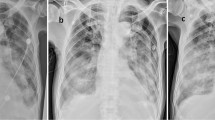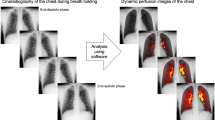Abstract
Tracheal Bronchus (TB) is a rare congenital anomaly characterized by the presence of an abnormal bronchus originating from the trachea or main bronchi and directed toward the upper lobe. The airflow pattern in tracheobronchial trees of TB subjects is critical, but has not been systemically studied. This study proposes to simulate the airflow using CT image based models and the computational fluid dynamics (CFD) method. Six TB subjects and three health controls (HC) are included. After the geometric model of tracheobronchial tree is extracted from CT images, the spatial distribution of velocity, wall pressure, wall shear stress (WSS) is obtained through CFD simulation, and the lobar distribution of air, flow pattern and global pressure drop are investigated. Compared with HC subjects, the main bronchus angle of TB subjects and the variation of volume are large, while the cross-sectional growth rate is small. High airflow velocity, wall pressure, and WSS are observed locally at the tracheal bronchus, but the global patterns of these measures are still similar to those of HC. The ratio of airflow into the tracheal bronchus accounts for 6.6–15.6% of the inhaled airflow, decreasing the ratio to the right upper lobe from 15.7–21.4% (HC) to 4.9–13.6%. The air into tracheal bronchus originates from the right dorsal near-wall region of the trachea. Tracheal bronchus does not change the global pressure drop which is dependent on multiple variables. Though the tracheobronchial trees of TB subjects present individualized features, several commonalities on the structural and airflow characteristics can be revealed. The observed local alternations might provide new insight into the reason of recurrent local infections, cough and acute respiratory distress related to TB.










Similar content being viewed by others
Abbreviations
- BC:
-
Boundary conditions
- COPD:
-
Chronic obstructive pulmonary disease
- CFD:
-
Computational fluid dynamics
- CT:
-
Computed Tomography
- LLL:
-
Left lower lobe
- LUL:
-
Left upper lobe
- LA:
-
Lobar distribution
- PFT:
-
Pulmonary function tests
- RLL:
-
Right lower lobe
- RML:
-
Right middle lobe
- RUL:
-
Right upper lobe
- STL:
-
Stereo lithography
- TB:
-
Tracheal bronchus
References
Berrocal, T., Madrid, C., Novo, S., et al., Congenital anomalies of the tracheobronchial tree, lung, and mediastinum: Embryology, radiology, and pathology. Radiographics A Review Publication of the Radiological Society of North America Inc. 24(1):e17, 2004.
Chassagnon, G., Morel, B., and Carpentier, E., Tracheobronchial branching abnormalities: Lobe-based classification scheme. Radiographics A Review Publication of the Radiological Society of North America Inc. 36(4):150115, 2016.
Ming, Z., and Lin, Z., Evaluation of tracheal bronchus in Chinese children using multidetector CT. Pediatr. Radiol. 37:1230–1234, 2007.
Desir, A., and Ghaye, B., Congenital abnormalities of intrathoracic airways. Radiol. Clin. N. Am. 47(2):203–225, 2009.
Laroia, A.T., Thompson, B.H., Laroia, S.T., and van Beek, E.J.R., Modern imaging of the tracheo-bronchial tree. World. J. Radiol. 2(7):237–248, 2010.
Pu, J., Gu, S., Liu, S., Zhu, S., Wilson, D., Siegfried, J.M., and Gur, D., CT based computerized identification and analysis of human airways: A review. Med. Phys. 39(5):2603–2616, 2011.
Rubin, B.K., Dhand, R., Ruppel, G.L., Branson, R.D., and Hess, D.R., Respiratory care year inreview2010: Part 1. Asthma, COPD, pulmonary function testing, ventilator-associated pneumonia. Respir. Care. 56(4):488–502, 2011.
Ruppel, G.L., and Enright, P.L., Pulmonary function testing. Respir. Care. 57(1):165–175, 2012.
Burrowes, K.S., De Backer, J., Smallwood, R., Sterk, P.J., Gut, I., Wirix-Speetjens, R., Siddiqui, S., Owers-Bradley, J., Wild, J., Maier, D., and Brightling, C., Multi-scale computational models of the airways to unravel the pathophysiological mechanisms in asthma and chronic obstructive pulmonary disease (AirPROM). Interface Focus. 3(2):20120057, 2013.
Kleinstreuer, C., and Zhang, Z., Airflow and particle transport in the human respiratory system. Annu. Rev. Fluid. Mech. 42(1–4):301–334, 2010.
Yang, X.L., Liu, Y., and Luo, H.Y., Respiratory flow in obstructed airways. J. Biomech. 39(15):2743, 2006.
Luo, H.Y., Liu, Y., and Yang, X.L., Particle deposition in obstructed airways. J. Biomech. 40(14):3096, 2007.
Sul, B., Wallqvist, A., Morris, M.J., et al., A computational study of the respiratory airflow characteristics in normal and obstructed human airways. Comput. Biol. Med. 52(3):130–143, 2014.
Lin, C.L., Tawhai, M.H., Mclennan, G., and Hoffman, E.A., Multiscale simulation of gas flow in subject-specific models of the human lung. IEEE Eng. Med. Biol. 28(3):25–33, 2009.
De Backer, J.W., Vos, W.G., Gorlé, C.D., et al., Flow analyses in the lower airways: Patient-specific model and boundary conditions. Med. Eng. Phys. 30(7):872, 2008.
De Rochefort, L., Vial, L., Fodil, R., Maitre, X., Louis, B., Isabey, D., Caillibotte, G., Thiriet, M., Bittoun, J., Durand, E., and Sbirlea-Apiou, G., In vitro validation of computational fluid dynamic simulation in human proximal airways with hyperpolarized 3He magnetic resonance phase-contrast velocimetry. J. Appl. Physiol. 102(5):2012–2023, 2007.
De Backer JW, Vos WG, Vinchurkar SC, Claes R, Drollmann A, Wulfrank D, Parizel PM, Germonpre P, De Backer W (2010) Validation of computational fluid dynamics in CT-based airway models with SPECT/CT. Radiol 257(3):854–862.
Vial, L., Perchet, D., Fodil, R., Caillibotte, G., Fetita, C., Preteux, F., Beigelman-Aubry, C., Grenier, P., Thiriet, M., Isabey, D., and Sbirlea-Apiou, G., Airflow modeling of steady inspiration in two realistic proximal airway trees reconstructed from human thoracic tomodensitometric images. Comput. Methods. Biomech. Biomed. Engin. 8(4):267–277, 2005.
Qi, S., Li, Z., Yue, Y., van Triest, H.J.W., and Kang, Y., Computational fluid dynamics simulation of airflow in the trachea and main bronchi for the subjects with left pulmonary artery sling. Biomed. Eng. Online. 13:85, 2014.
Qi, S., Li, Z., Yue, Y., van Triest, H.J.W., Kang, Y., and Qian, W., Simulation analysis of deformation and stress of tracheal and main bronchial wall for the subjects with left pulmonary artery sling. J. Mech. Med. Biol. 15(6):1540053, 2015.
Qi, S., Zhang, B., Teng, Y., Li, J., Yue, Y., Kang, Y., and Qian, W., Transient dynamics simulation of airflow in a CT-scanned human airway tree: More or fewer terminal bronchi? Comput. Math. Methods Med. 2017:1969023, 2017.
De Backer, J.W., Vos, W.G., Devolder, A., Verhulst, S.L., Germonpre, P., Wuyts, F.L., Parizel, P.M., and De Backer, W., Computational fluid dynamics can detect changes in airway resistance in asthmatics after acute bronchodilation. J. Biomech. 41(1):106–113, 2008.
Ho, C.Y., Liao, H.M., Tu, C.Y., Huang, C.Y., Shih, C.M., Su, M.Y., Chen, J.H., and Shih, T.C., Numerical analysis of airflow alteration in central airways following tracheobronchial stent placement. Exp. Hematol. Oncol. 1(1):23, 2012.
Chen, F.L., Horng, T.L., and Shih, T.C., Simulation analysis of airflow alteration in the trachea following the vascular ring surgery based on CT images using the computational fluid dynamics method. J. X-ray Sci. Technol. 22(2):213–225, 2014.
Bos, A.C., van Holsbeke, C., de Backer, J.W., van Westreenen, M., Janssens, H.M., Vos, W.G., et al., Patient-specific modeling of regional antibiotic concentration levels in airways of patients with cystic fibrosis: Are we dosing high enough? PLoS ONE10. 3:e0118454, 2015.
Luo, H.Y., and Liu, Y., Modeling the bifurcating flow in a CT-scanned human lung airway. J. Biomech. 41(12):2681–2688, 2008.
Mylavarapu, G., Murugappan, S., Mihaescu, M., et al., Validation of computational fluid dynamics methodology used for human upper airway flow simulations. J. Biomech. 42(10):1553–1559, 2009.
Gemci, T., Ponyavin, V., Chen, Y., et al., Computational model of airflow in upper 17 generations of human respiratory tract. J. Biomech. 41(9):2047–2054, 2008.
Walters, D.K., Burgreen, G.W., Lavallee, D.M., Thompson, D.S., and Hester, R.L., Efficient, physiologically realistic lung airflow simulations. IEEE Trans. Biomed. Eng. 58(10):3016–3019, 2011.
Ma, B., and Lutchen, K.R., An anatomically based hybrid computational model of the human lung and its application to low frequency oscillatory mechanics. Ann. Biomed. Eng. 34(11):1691–1704, 2006.
Chen, S.J., Lee, W.J., Wang, J.K., et al., Usefulness of three-dimensional electron beam computed tomography for evaluating tracheobronchial anomalies in children with congenital heart disease. Am. J. Cardiol. 92(4):483–486, 2003.
Balásházy, I., and Hofmann, W., Deposition of aerosols in asymmetric airway bifurcations. J. Aerosol Sci. 26(2):273–292, 1995.
Middleton, R.M., Littleton, J.T., Brickey, D.A., et al., Obstructed tracheal bronchus as a cause of post-obstructive pneumonia. J. Thorac. Imaging. 10(3):223–224, 1995.
Doolittle, A.M., and Mair, E.A., Tracheal bronchus: Classification, endoscopic analysis, and airway management. Otolaryngology--head and neck surgery: Official journal of American Academy of otolaryngology-head and neck Surgery. 126(3):240–243, 2002.
Panigada, S., Sacco, O., Girosi, D., et al., Recurrent severe lower respiratory tract infections in a child with abnormal tracheal morphology. Pediatr. Pulmonol. 44(2):192–194, 2009.
Seo, T., Ando, H., Kaneko, K., et al., Two cases of prenatally diagnosed congenital lobar emphysema caused by lobar bronchial atresia. J. Pediatr. Surg. 41(11):17–20, 2006.
Morikawa, N., Kuroda, T., Honna, T., et al., Congenital bronchial atresia in infants and children. J. Pediatr. Surg. 40(12):1822–1826, 2005.
Freitas, R.K., and Schroder, W., Numerical investigation of the three-dimensional flow in a human lung model. J. Biomech. 41(11):2446–2457, 2008.
Mott, L.S., Park, J., Gangell, C.L., de Klerk, N.H., Sly, P.D., Murray, C.P., and Stick, S.M., Distribution of early structural lung changes due to cystic fibrosis detected with chest computed tomography. J. Pediatr. 163(1):243–248, 2013.
Nakano, Y., Van Tho, N., Yamada, H., Osawa, M., and Nagao, T., Radiological approach to asthma and COPD--the role of computed tomography. Allergol. Int. 58(3):323–331, 2009.
Acknowledgments
The authors also acknowledge Mr. Paul Young for his helpful language editing.
Funding
This study was funded by the National Natural Science Foundation of China under Grant (Grant number: 81,671,773, 61,672,146).
Author information
Authors and Affiliations
Contributions
SQ: proposed the idea, performed experiments, analyzed the data, made discussions and composed the manuscript together with BZ, YT. YY and JS: provided CT images and radiology instruction, and made the discussions. WQ and JW: directed the experiments and made discussions. All authors read and approved the final manuscript.
Corresponding author
Ethics declarations
Conflict of Interest
The authors declare that they have no conflict of interest.
Ethical Approval
All procedures performed in studies involving human participants were in accordance with the ethical standards of the institutional and/or national research committee and with the 1964 Helsinki declaration and its later amendments or comparable ethical standards.
Informed Consent
Informed consent was obtained from all individual participants included in the study.
Additional information
This article is part of the Topical Collection on Image & Signal Processing
Rights and permissions
About this article
Cite this article
Qi, S., Zhang, B., Yue, Y. et al. Airflow in Tracheobronchial Tree of Subjects with Tracheal Bronchus Simulated Using CT Image Based Models and CFD Method. J Med Syst 42, 65 (2018). https://doi.org/10.1007/s10916-017-0879-0
Received:
Accepted:
Published:
DOI: https://doi.org/10.1007/s10916-017-0879-0




